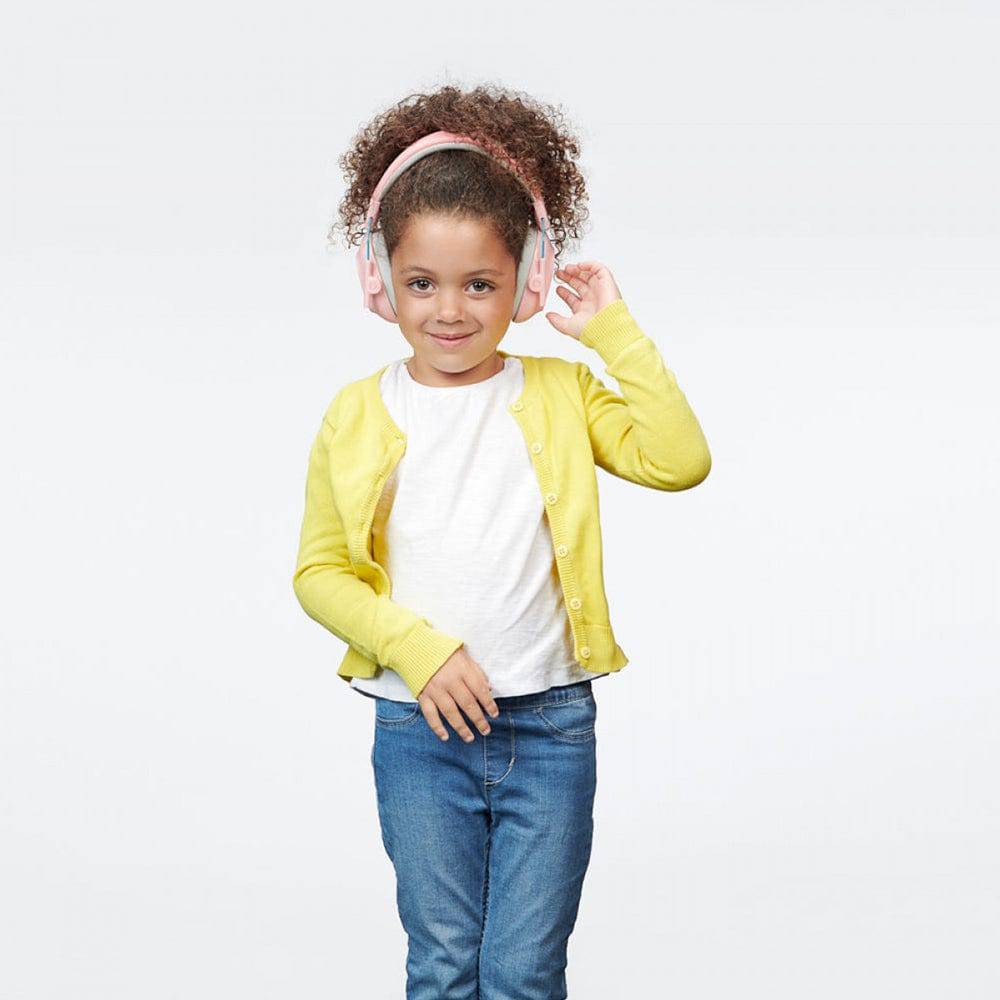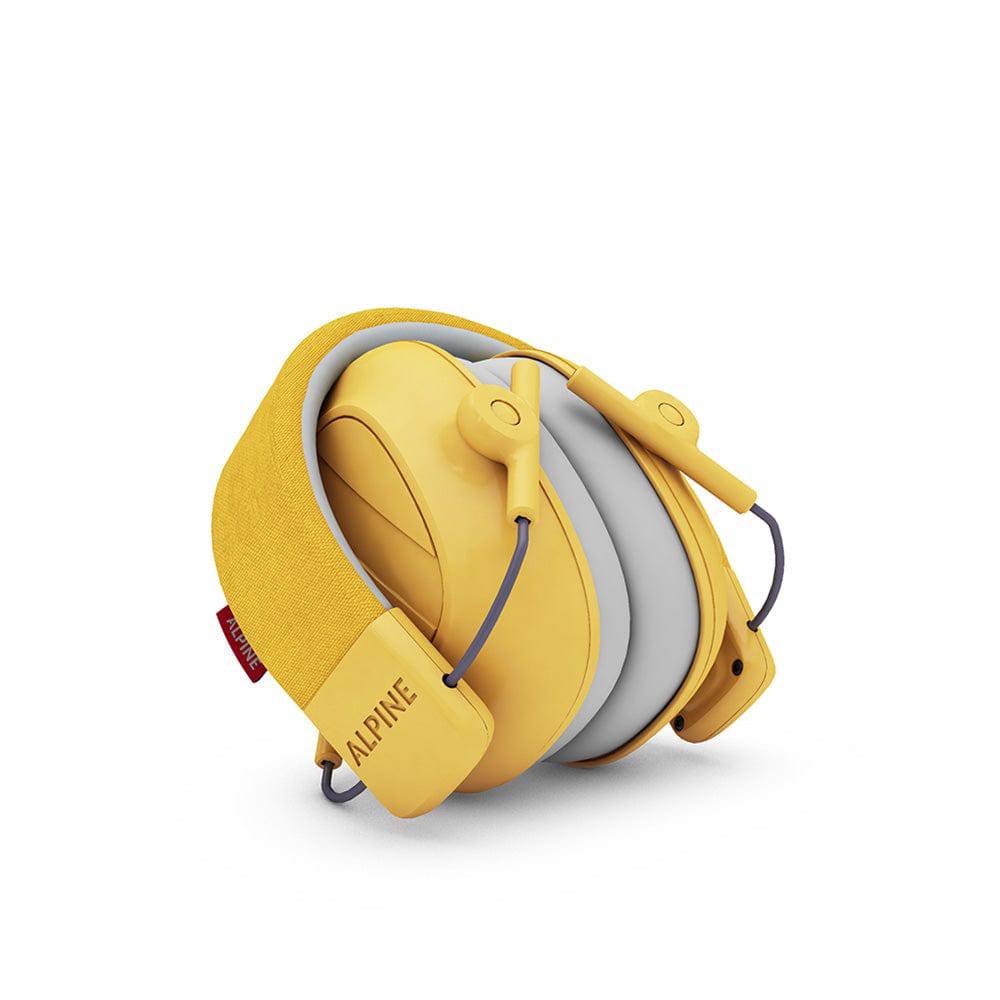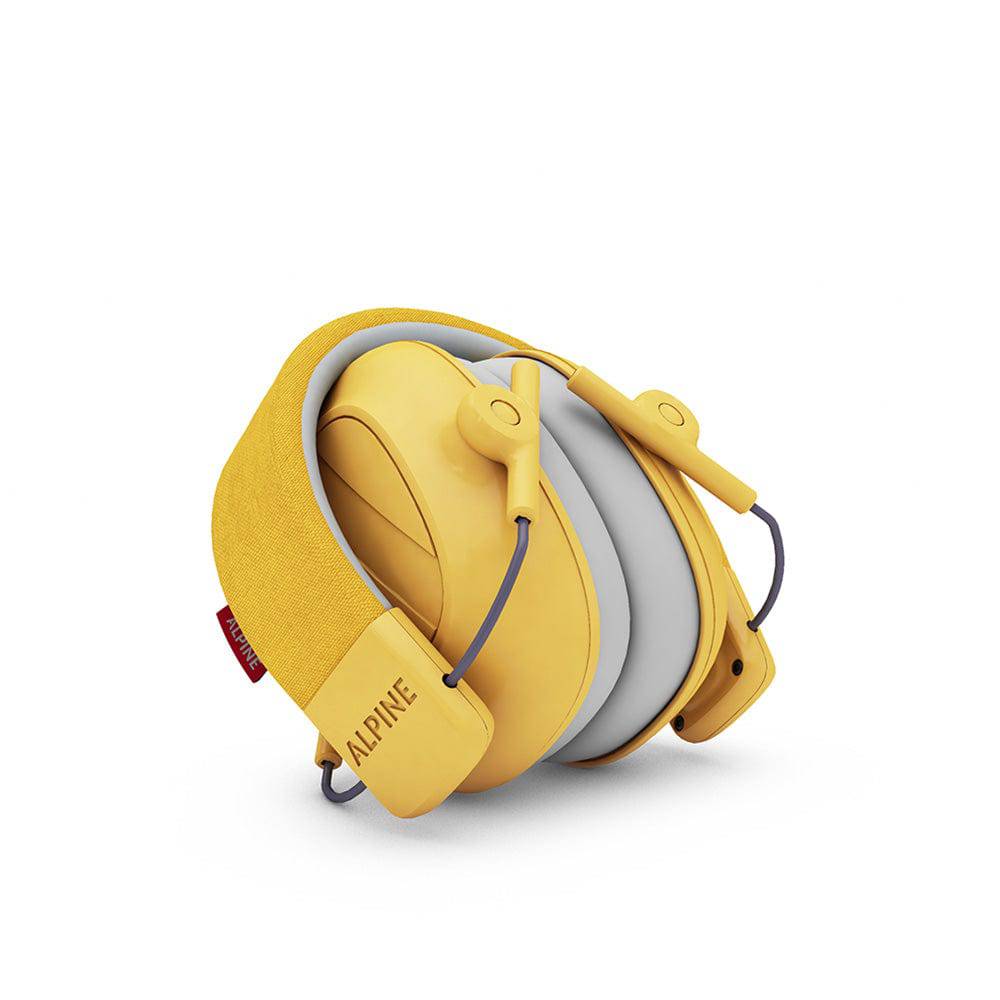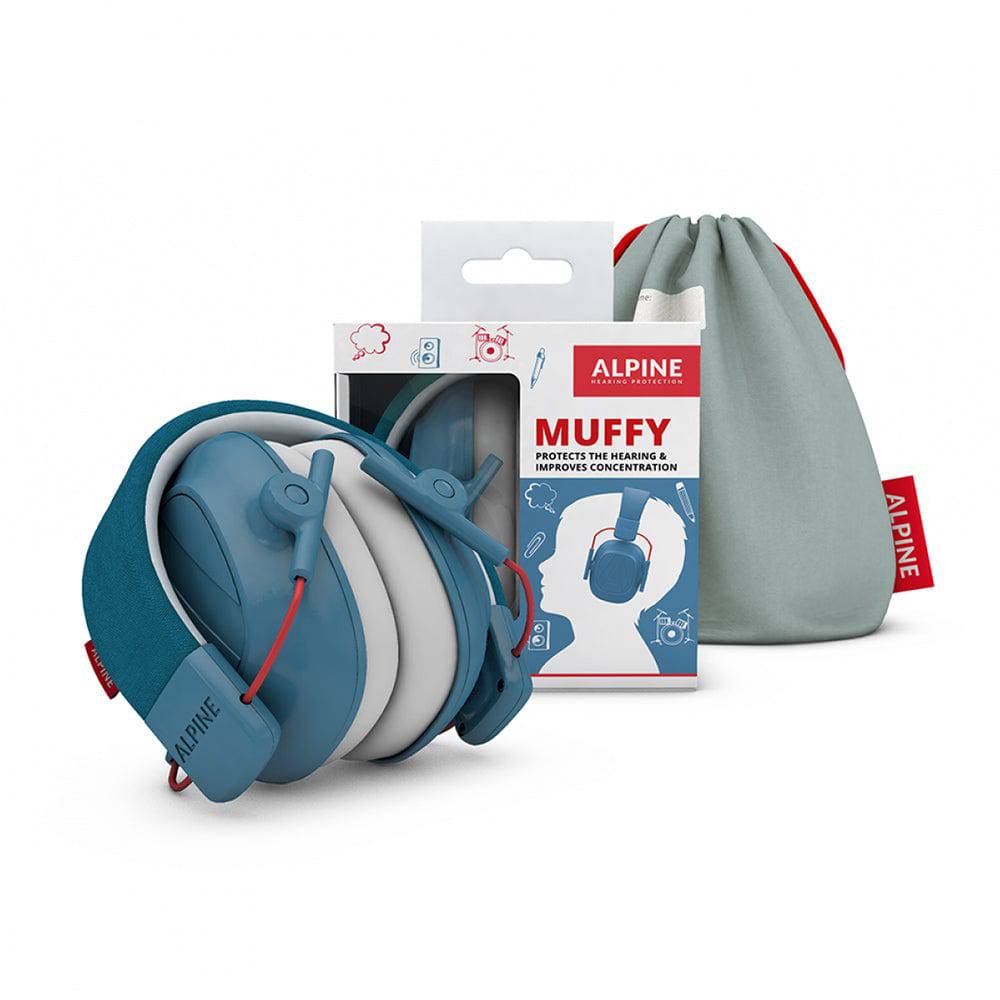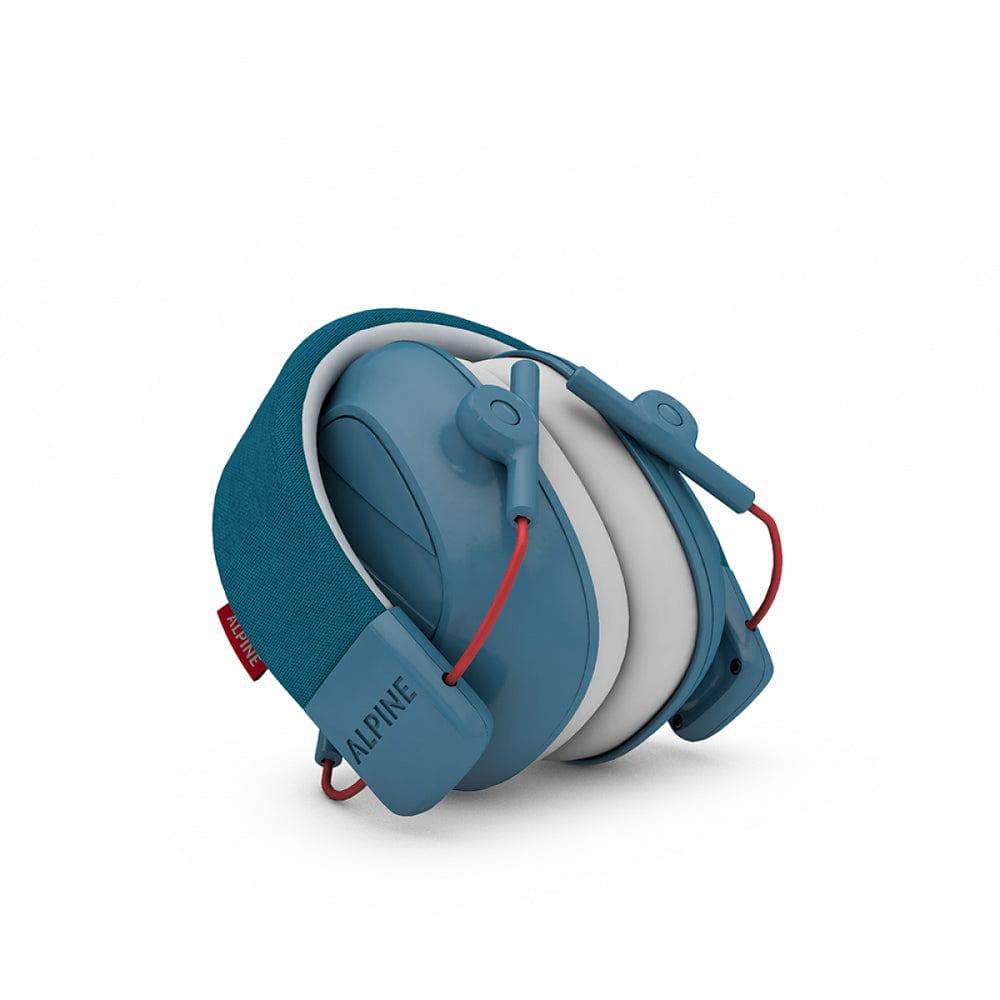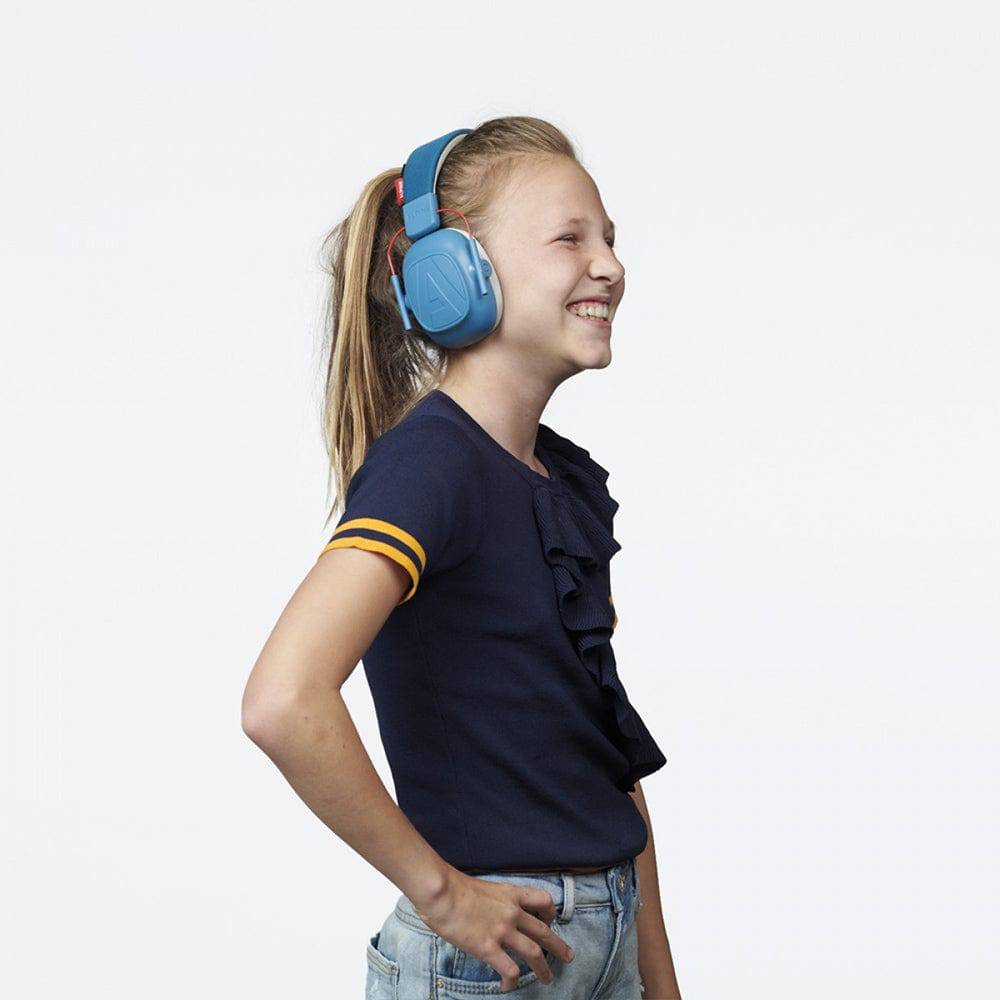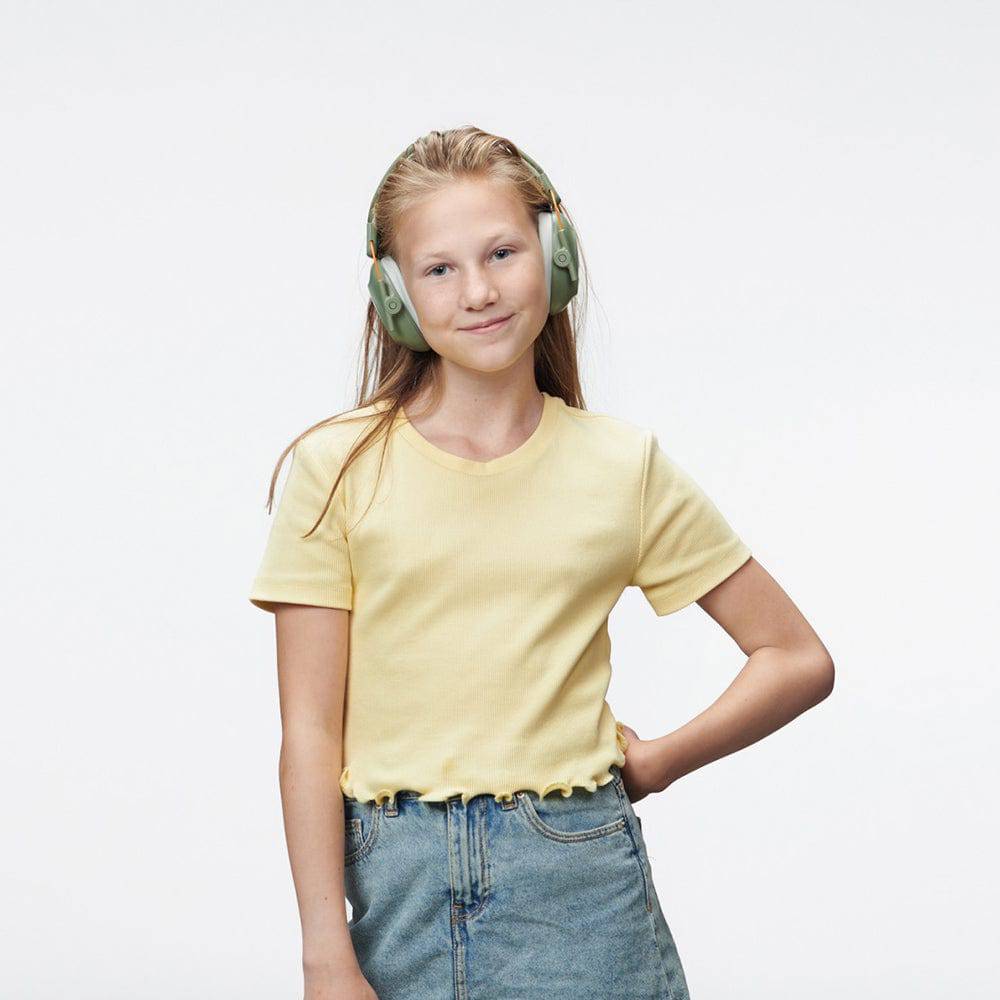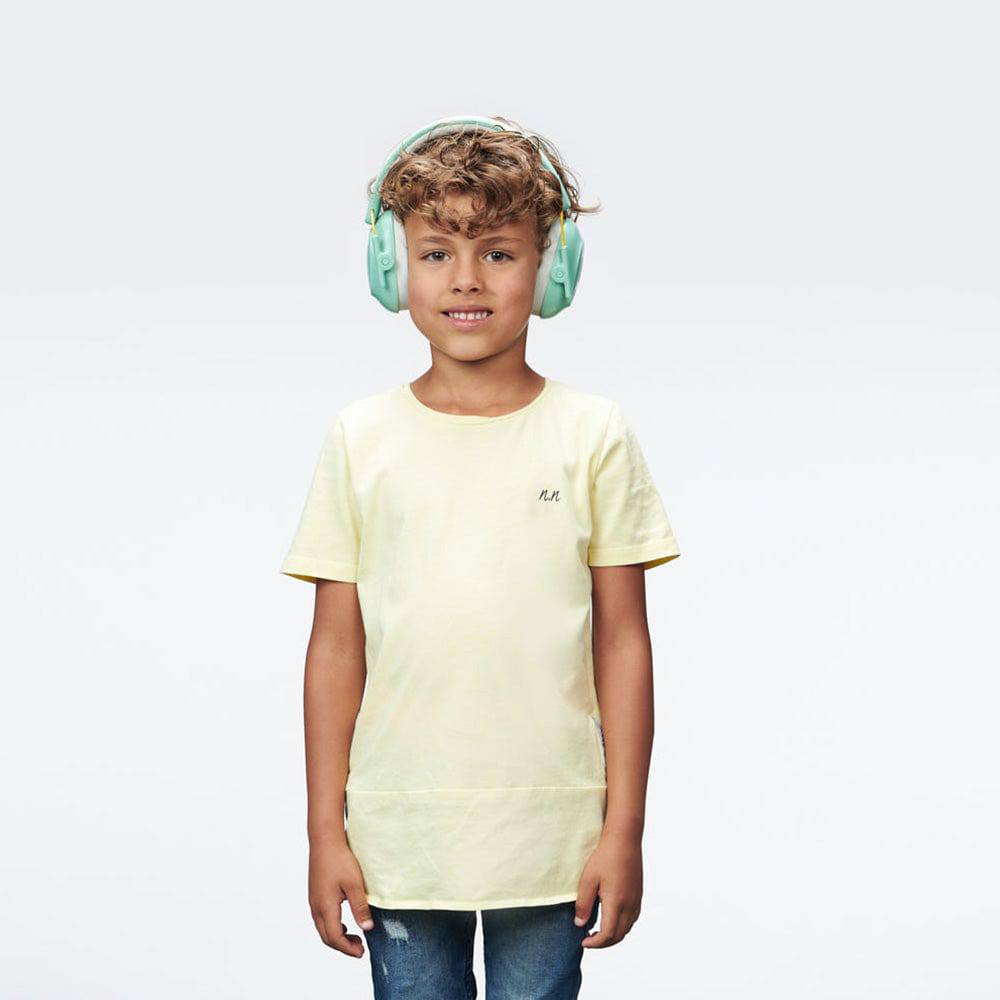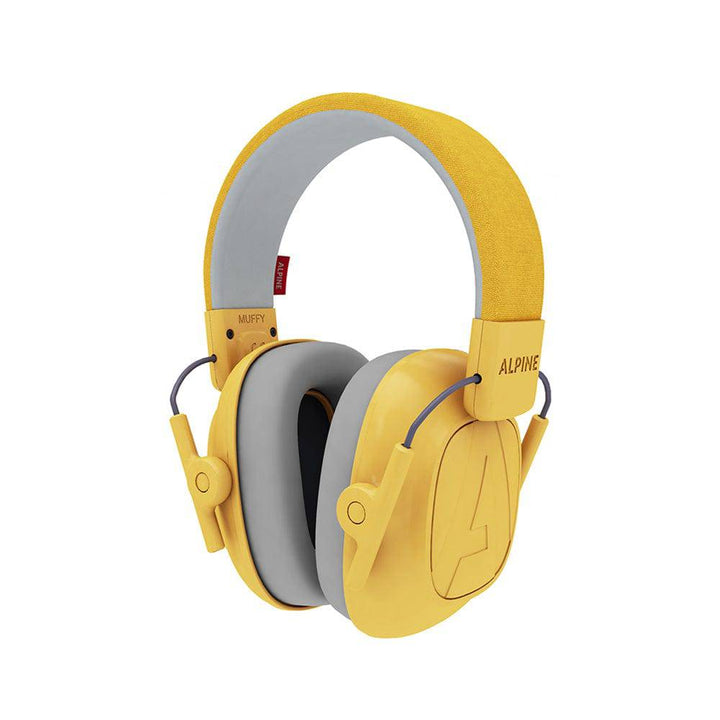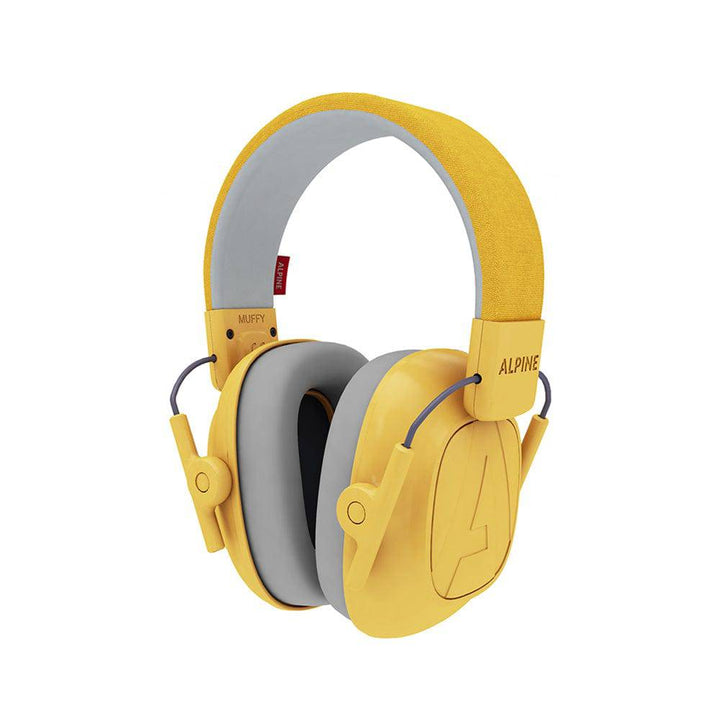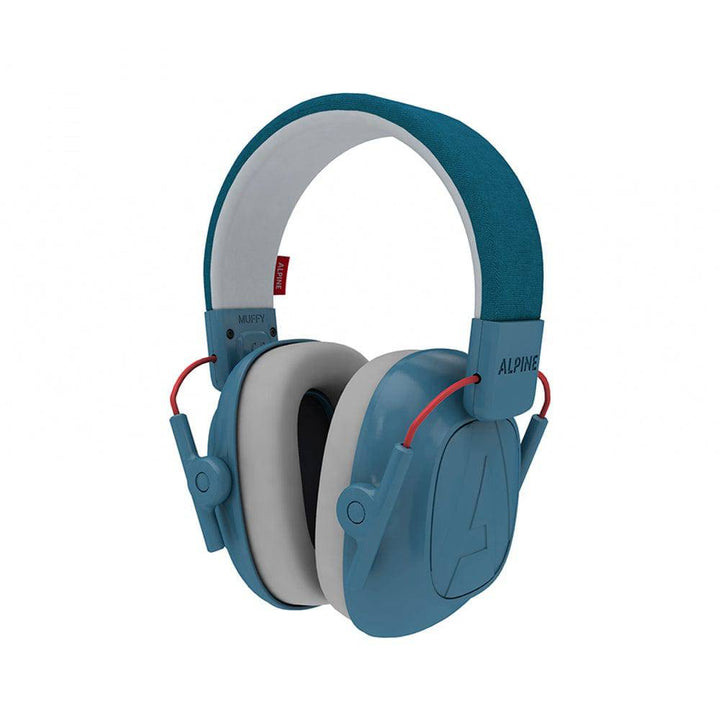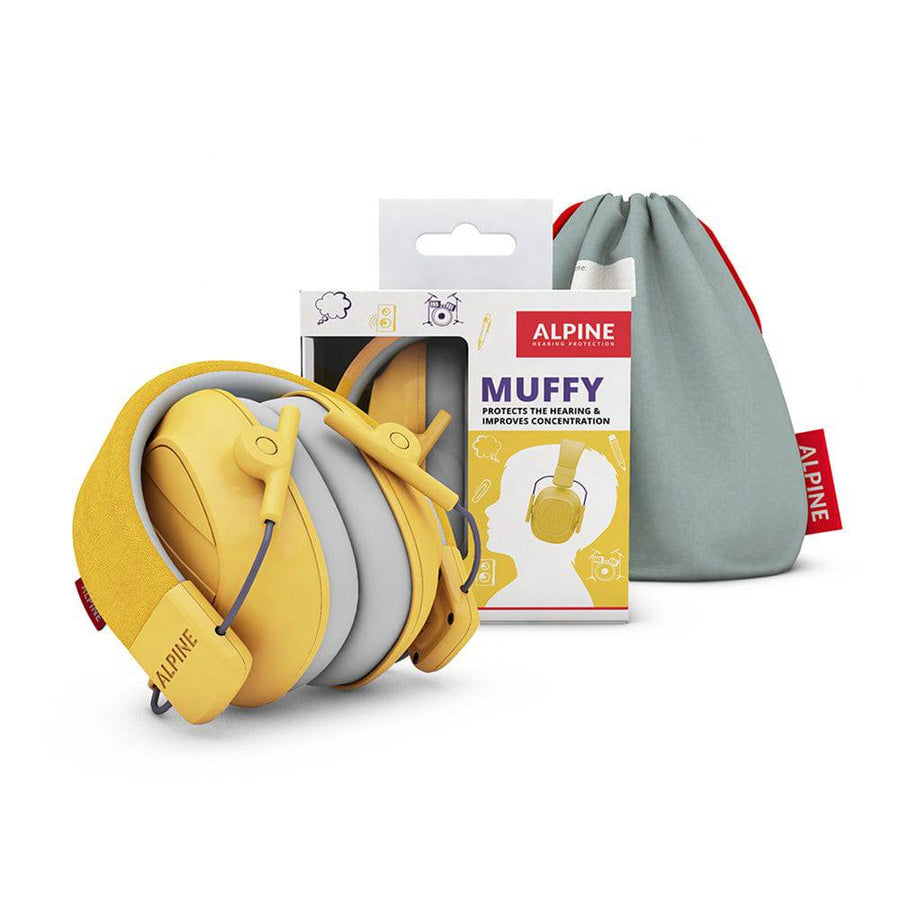Introducing Alpine Muffy Kids Ear Muffs, the perfect solution for protecting your child's hearing in noisy environments while keeping them comfortable and engaged. These ear muffs are designed with young explorers in mind, offering superior noise reduction and style for your child's safety and enjoyment.
Key Features:
-
Kid-Friendly Design: Alpine Muffy Kids Ear Muffs feature a playful and colourful design that appeals to children, making them eager to wear their ear protection.
-
Effective Noise Reduction: Engineered to reduce harmful noise while preserving sound clarity, these ear muffs keep your child's hearing safe during loud events or activities.
-
Comfortable Fit: Padded with soft, hypoallergenic material, Alpine Muffy Kids Ear Muffs provide a comfortable and secure fit, ensuring your child's comfort during extended use.
-
Adjustable and Durable: Designed to grow with your child, these ear muffs are adjustable to fit various head sizes and are built to withstand active adventures.
-
Easy to Carry: Alpine Muffy Kids Ear Muffs are foldable and come with a carry pouch, making them portable and convenient for travel and outings.
Why Choose Alpine Muffy Kids Ear Muffs?
-
Protect Little Ears: Ensure your child's hearing remains safe and secure during concerts, sporting events, fireworks shows, and any loud activities.
-
Kid-Approved Comfort: The combination of noise protection and comfort makes these ear muffs a favourite among children and parents alike.
-
Versatile Use: Ideal for various noisy environments, these ear muffs empower your child to explore the world safely.
Specifications:
- Material: Hypoallergenic padding
- Adjustable: Yes
- Recommended Age: Children (adjustable size)
- Includes: 1 pair of Alpine Muffy Kids Ear Muffs, 1 carry pouch
Equip your young explorer with Alpine Muffy Kids Ear Muffs and let them embark on adventures with confidence, knowing their hearing is protected while they make lasting memories.
Specifications
Attenuation table Muffy Kids
| Frequency Hz | 63 | 125 | 250 | 500 | 1000 | 2000 | 4000 | 8000 |
| Mean Attenuation dB | 14.8 | 12.5 | 14.9 | 24.9 | 34,8 | 31,3 | 32,8 | 29,6 |
| Standard Deviation dB | 4.8 | 3,7 | 2,9 | 4,1 | 4,6 | 3,3 | 3,7 | 6,8 |
| Assumed Protection in dB (APV) | 9,9 | 8,8 | 12,0 | 20,8 | 30,1 | 27,9 | 29,0 | 22,8 |






FAQs
Alpine Muffy Baby Ear Muffs are typically designed and recommended for babies and infants aged 0 to 36 months. These ear muffs are specially crafted to provide gentle and effective noise reduction to protect your baby's sensitive ears from loud noises while ensuring their comfort.
However, it's important to note that individual comfort and development may vary from baby to baby. Some babies may be more sensitive to noise, while others may tolerate noise levels differently. Parents and caregivers should use their discretion and monitor their baby's comfort when using ear muffs.
Always ensure that the ear muffs fit securely but comfortably on your baby's head, and follow the manufacturer's guidelines and recommendations for safe and proper use. If you have any concerns or questions about using Alpine Muffy Baby Ear Muffs for your baby, it's advisable to consult with a healthcare professional or your pediatrician for personalized guidance.
When it comes to choosing the best ear protection for babies during flights, there are a few options to consider, including infant earmuffs and earplugs. Here are some factors to keep in mind:
1. Infant Earmuffs:
- Infant earmuffs, such as Alpine Muffy Baby Ear Muffs, are designed specifically for babies and young children. They provide gentle noise reduction while ensuring comfort.
- Look for earmuffs with adjustable headbands to ensure a secure and snug fit.
- Choose earmuffs that are lightweight and portable, making them suitable for travel.
- Check that the earmuffs have been tested for safety and meet relevant safety standards.
2. Earplugs for Babies:
- Some parents may opt for soft, foam earplugs designed for babies, which can be inserted gently into the ear canal.
- Ensure that the earplugs are specifically designed for infants and do not insert them too deeply into the baby's ears. Insertion should be shallow and gentle.
- Always follow the manufacturer's instructions for earplug use with infants.
3. Consult with a Pediatrician:
- Before using any form of ear protection for your baby during a flight, it's advisable to consult with your pediatrician or healthcare professional.
- They can provide guidance on the most suitable option based on your baby's age, health, and any specific needs or concerns.
4. Test Comfort in Advance:
- If possible, introduce the ear protection to your baby in a quiet and comfortable environment before the flight. This can help them get accustomed to wearing the earmuffs or earplugs.
Remember that the primary goal of ear protection for babies during flights is to reduce the discomfort caused by changes in air pressure, particularly during takeoff and landing. It's essential to choose a product that provides a balance between noise reduction and comfort. Additionally, be prepared to offer your baby soothing techniques such as feeding, pacifiers, or cuddling to help alleviate any discomfort during the flight.
Protecting your baby's ears from loud noises is essential to ensure their comfort and prevent potential hearing damage. Here are some strategies to help safeguard your baby's ears:
1. Use Ear Protection:
- Consider using infant earmuffs specifically designed for babies and young children when you anticipate exposure to loud noises, such as concerts, fireworks, or sporting events.
- Choose ear protection that is comfortable, adjustable, and provides adequate noise reduction while allowing your baby to hear some ambient sounds.
2. Maintain a Safe Distance:
- Whenever possible, keep your baby at a safe distance from loud noises. This may involve moving away from noisy machinery, construction sites, or loud music speakers.
- Avoid placing your baby near sources of loud sounds, such as loudspeakers or musical instruments.
3. Reduce Noise Exposure:
- If you're in a noisy environment, consider leaving your baby in a quieter space or taking breaks in a quieter area to reduce their overall noise exposure.
- Limit the duration of exposure to loud noises.
4. Use White Noise or Soothing Sounds:
- In situations where you can control the environment, use white noise machines or soothing sounds to mask loud noises and create a more calming atmosphere for your baby.
5. Avoid Loud Events During Naps or Bedtime:
- Be mindful of scheduling events or activities that involve loud noises during your baby's naptime or bedtime to ensure they get the rest they need.
6. Monitor Noise Levels:
- Familiarize yourself with common noise levels in different environments. Keep in mind that prolonged exposure to sounds above 85 decibels (dB) can potentially harm hearing.
7. Stay Informed:
- Be aware of your baby's responses to loud noises. If they seem uncomfortable, agitated, or cover their ears, it's a sign that the noise may be too loud for them.
8. Consult with a Pediatrician:
- If you have concerns about your baby's exposure to loud noises or their reactions to such sounds, consult with your pediatrician for guidance and recommendations.
9. Use Earplugs or Earmuffs for Travel:
- When traveling, particularly by air or during car rides, consider using infant earmuffs or earplugs to protect your baby's ears from sudden loud noises, such as engine sounds or pressure changes.
10. Educate Caregivers:
- Ensure that anyone caring for your baby, such as grandparents or babysitters, is aware of the importance of protecting the baby's ears from loud noises and follows these guidelines.
Remember that protecting your baby's ears is crucial for their overall well-being and hearing health. While it's important to shield them from loud noises, it's also essential to provide them with a nurturing and supportive environment to promote healthy development.
The reduction in decibels (dB) provided by earplugs can vary depending on the type of earplugs, their design, and how well they fit in the ear canal. On average, standard foam earplugs typically provide a noise reduction of around 20 to 30 dB when properly inserted.
Here's a rough guideline for the noise reduction capabilities of different types of earplugs:
1. Foam Earplugs: Foam earplugs are among the most common types of disposable earplugs. They can offer noise reduction of approximately 20 to 30 dB.
2. Silicone or Rubber Earplugs: Silicone or rubber earplugs are reusable and often have a slightly lower noise reduction rating (NRR) compared to foam earplugs, typically ranging from 15 to 25 dB.
3. Custom-Molded Earplugs: Custom-molded earplugs, which are professionally fitted to an individual's ear canal, can provide a more precise and consistent level of noise reduction, often in the range of 20 to 30 dB or more.
4. Musicians' Earplugs: Musicians' earplugs are designed to reduce noise levels while preserving sound quality. They usually provide a relatively flat attenuation, meaning they reduce noise levels evenly across different frequencies. The NRR for musicians' earplugs can vary but often falls within the 10 to 25 dB range.
5. High-Fidelity Earplugs: High-fidelity earplugs are similar to musicians' earplugs and are designed to reduce noise while maintaining the clarity of music or speech. They typically offer an NRR in the range of 10 to 20 dB.
It's important to note that the effectiveness of earplugs depends not only on their NRR but also on proper insertion. If earplugs are not inserted correctly or do not fit snugly in the ear canal, their noise reduction capabilities may be compromised.
When selecting earplugs for specific noise-reduction needs, it's advisable to check the manufacturer's specifications, including the NRR, to ensure they provide adequate protection for your intended use. Additionally, following the manufacturer's instructions for proper insertion is essential to achieve the expected noise reduction.
Yes, four-year-old children can wear earplugs in certain situations, such as when exposed to loud noises or when ear protection is necessary. However, it's essential to choose earplugs that are specifically designed for children and to use them in a safe and appropriate manner. Here are some considerations:
1. Child-Sized Earplugs: Look for earplugs that are designed for children or have a smaller size to ensure a proper fit. These earplugs are typically made with children's comfort and safety in mind.
2. Noise Reduction: Consider the noise level and the need for ear protection. Earplugs can be useful in situations like concerts, fireworks displays, or other loud events where noise reduction is necessary to protect a child's sensitive ears.
3. Safe and Appropriate Use: Ensure that the earplugs are used correctly and inserted safely into the child's ears. Follow the manufacturer's instructions for proper insertion and removal.
4. Supervision: Adults should always supervise the use of earplugs by young children to ensure they are used correctly and to prevent any potential choking hazards.
5. Comfort and Communication: Be attentive to the child's comfort and ability to communicate while wearing earplugs. Make sure they can still hear and communicate with others when necessary.
6. Limited Use: Earplugs should not be used excessively or for extended periods unless recommended by a healthcare professional. They are primarily intended for occasional use in noisy environments.
7. Consult with a Pediatrician: If you have concerns about using earplugs for your child, especially if there are underlying medical conditions, it's advisable to consult with a pediatrician or healthcare provider for personalized guidance.
Remember that the safety and comfort of the child should be the top priorities when using earplugs. If you're unsure about whether earplugs are appropriate for your child's specific situation, seek professional advice to ensure their well-being.
Yes, it's a good idea for kids to wear earplugs at concerts or other events with loud music or noise. Concerts can be very loud, and prolonged exposure to high volumes of noise can potentially damage a child's delicate hearing.
Here are some reasons why kids should wear earplugs at concerts:
1. Protecting Hearing: Loud music at concerts can reach levels that are harmful to hearing, even for adults. A child's ears are more sensitive and susceptible to damage from loud noises, so wearing earplugs can help prevent hearing loss.
2. Comfort and Reduced Stress: Loud sounds can be uncomfortable and overwhelming for children, leading to stress or anxiety. Earplugs can help reduce the discomfort and allow them to enjoy the music without feeling overwhelmed.
3. Long-Term Hearing Health: Noise-induced hearing damage is cumulative, meaning the more a child is exposed to loud noises without protection, the greater the risk of permanent hearing loss in the future. Earplugs can help mitigate this risk.
4. Concentration and Enjoyment: Earplugs can enhance a child's ability to focus on the music and enjoy the concert experience. They can hear the music more clearly without the distortion caused by excessive volume.
5. Customized Hearing Protection: There are earplugs designed specifically for musicians and concertgoers, often called "high-fidelity" or "musician's" earplugs. These earplugs attenuate noise evenly across frequencies, allowing for a more balanced listening experience.
When choosing earplugs for kids to wear at concerts, consider the following:
- Child-Sized Earplugs: Look for earplugs designed for children or smaller earplugs that fit comfortably in their ears.
- Comfort and Fit: Ensure that the earplugs fit snugly but comfortably in the child's ears. Uncomfortable earplugs may be less likely to be worn.
- Proper Use: Teach your child how to insert and remove the earplugs correctly. Make sure they understand why ear protection is important.
- Supervision: If your child is very young, consider supervising their use of earplugs to ensure they are used correctly and safely.
- Communication: Make sure your child can still communicate with you and others while wearing earplugs.
Overall, wearing earplugs at concerts can help protect a child's hearing and enhance their concert experience. It's a proactive measure to ensure their long-term hearing health.






